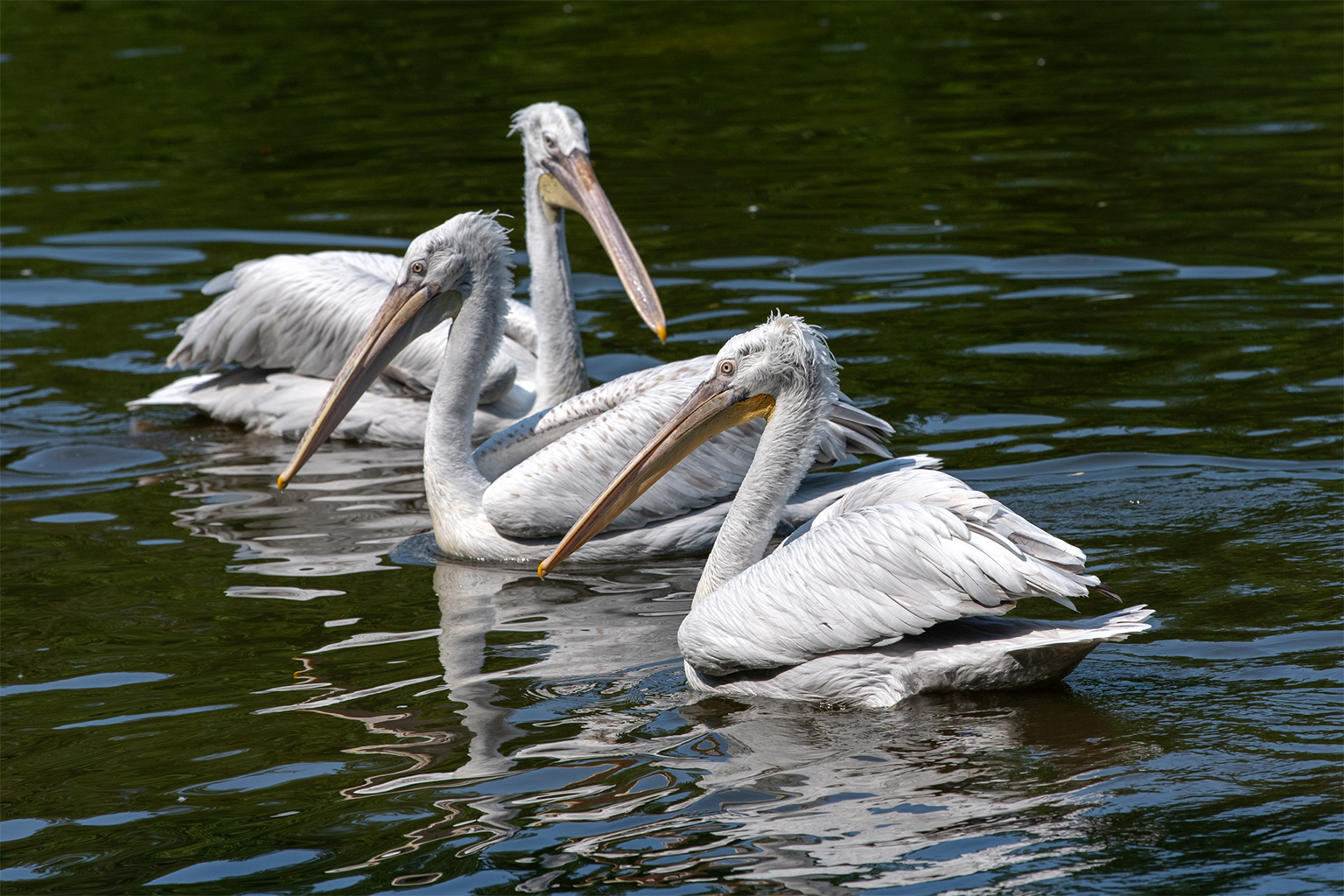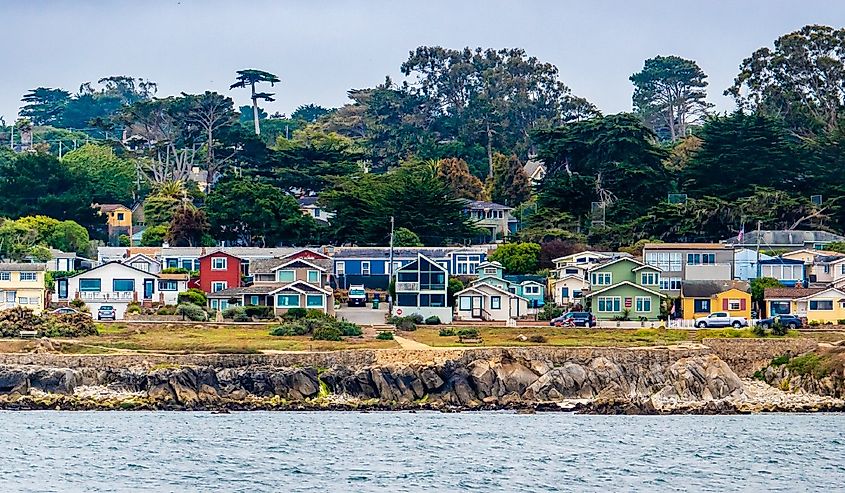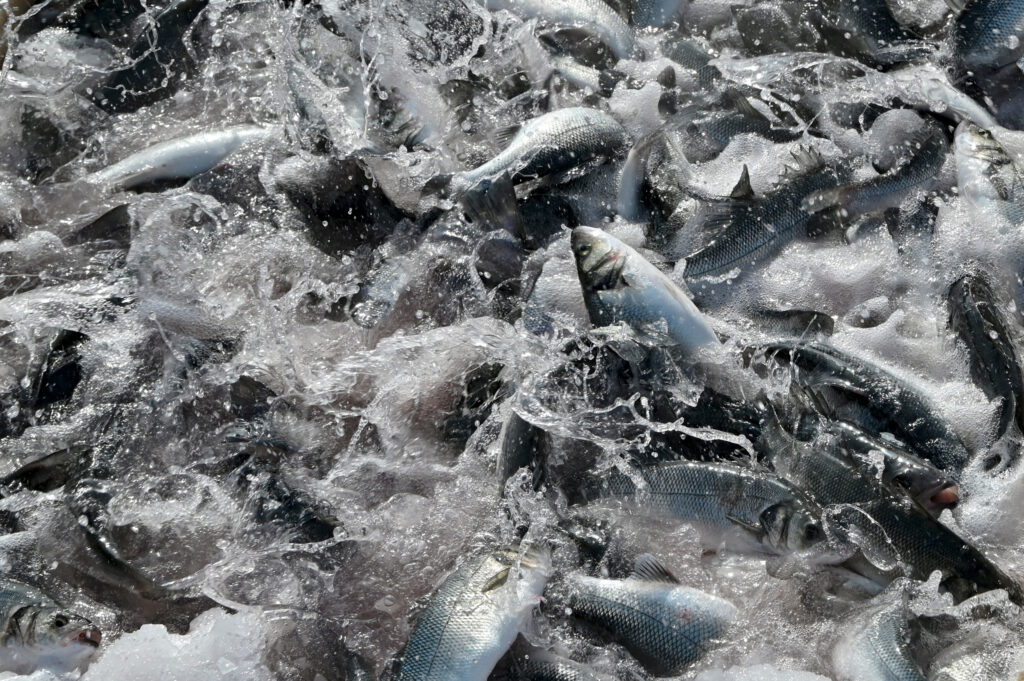Pakistan declares its third marine protected area, but has a long way to go – Mongabay

Report on the Establishment of Miani Hor Marine Protected Area and its Implications for Sustainable Development Goals
Introduction: Pakistan’s Progress on Marine Conservation and SDG 14
On September 2, the government of Balochistan province, Pakistan, officially designated Miani Hor Lagoon as the nation’s third Marine Protected Area (MPA). This action represents a national effort to advance conservation and align with international commitments, particularly Sustainable Development Goal 14 (Life Below Water), which calls for the conservation and sustainable use of oceans, seas, and marine resources. The establishment of the Miani Hor MPA is a direct contribution to Target 14.5, aiming to conserve coastal and marine areas.
Miani Hor MPA: A Step Towards Global Biodiversity Targets
Alignment with the Kunming-Montreal Global Diversity Framework
The declaration is a step towards achieving Target 3 of the Kunming-Montreal Global Diversity Framework, commonly known as the “30×30” initiative, which aims to protect 30% of the Earth’s land and sea by 2030. However, Pakistan’s progress remains limited. The addition of the 43-square-kilometer Miani Hor MPA brings the country’s total protected marine area to 542 km², a figure that constitutes only 0.23% of its 240,000 km² marine and coastal jurisdiction. This highlights a significant gap in achieving the 30×30 target and lags behind regional neighbors.
- Total Marine Jurisdiction: 240,000 km²
- Total Protected Marine Area: 542 km² (0.23%)
- 30×30 Target: 30% protection by 2030
Ecological Significance and Relevance to SDGs
Biodiversity and its Contribution to SDG 14 and SDG 15
Miani Hor Lagoon is a recognized biodiversity hotspot, crucial for achieving SDG 14 (Life Below Water) and SDG 15 (Life on Land). Its ecological assets include:
- Mangrove Forests: The lagoon hosts a dense forest of three mangrove species (Avicennia marina, Rhizophora mucronata, and Ceriops tagal), which serve as critical nurseries for marine life, protect coastlines, and act as significant carbon sinks, contributing to SDG 13 (Climate Action).
- Avian Diversity: As a designated Ramsar Site, the area supports over 55 bird species, with an estimated 20,000 migratory and resident birds, including greater flamingos and Dalmatian pelicans.
- Marine Mammals: The lagoon is an “important marine mammal area,” providing habitat for a resident population of 60-80 endangered Indian Ocean humpback dolphins, as well as vulnerable Indo-Pacific finless porpoises and near-threatened Indo-Pacific bottlenose dolphins.
Challenges in Achieving Sustainable Development Goals
Socio-Economic Hurdles and Community Impact
The success of the MPA is intrinsically linked to addressing the socio-economic needs of local communities, a core principle of the Sustainable Development Goals, including SDG 1 (No Poverty) and SDG 8 (Decent Work and Economic Growth). Local populations are heavily dependent on the lagoon’s resources for their livelihoods. Key challenges include:
- Livelihood Dependence: Fishing is the primary source of income for many local families. Potential restrictions could jeopardize their economic stability.
- Resource Reliance: In the absence of basic amenities like cooking gas (related to SDG 7: Affordable and Clean Energy), communities rely on mangrove wood for fuel.
- Lack of Consultation: Reports indicate that local community members were not aware of the MPA declaration, raising concerns about inclusive governance and the potential for livelihood disruption.
Governance and Implementation Gaps
Effective governance is essential for achieving conservation outcomes and aligns with SDG 16 (Peace, Justice and Strong Institutions). Pakistan has faced delays in implementing management plans for its previously established MPAs. The management plan for the Astola Island MPA took eight years to develop, while the Churna Island MPA still lacks one. For Miani Hor, the scope of protections and exact boundaries remain to be determined, creating uncertainty for both conservation efforts and local inhabitants.
Recommendations for a Sustainable Path Forward
Integrating Community Needs for Effective Conservation
For the Miani Hor MPA to successfully contribute to national and global sustainability targets, its management must adopt an inclusive and balanced approach. Conservation efforts that fail to account for human development needs are unlikely to succeed. The protection of this vital ecosystem depends on a strategy that integrates environmental management with community well-being.
A Framework for Action
The development of a management plan for the Miani Hor MPA should prioritize the following actions:
- Conduct comprehensive scientific and social assessments to establish a baseline and understand the ecosystem’s and community’s needs.
- Engage local communities in a participatory process to co-design the management plan, ensuring their livelihoods and resource needs are addressed.
- Provide alternative energy sources and livelihood opportunities to reduce pressure on the mangrove forests and marine resources, directly supporting SDG 1, SDG 7, and SDG 8.
- Establish clear regulations, boundaries, and enforcement mechanisms to prevent destructive practices while allowing for sustainable use.
- Implement a robust monitoring system to track ecological health and socio-economic impacts, allowing for adaptive management.
Analysis of SDGs, Targets, and Indicators
1. Which SDGs are addressed or connected to the issues highlighted in the article?
-
SDG 14: Life Below Water
This is the most central SDG addressed. The article is entirely focused on the declaration of a Marine Protected Area (MPA) at Miani Hor Lagoon. It explicitly states, “This designation strengthens Pakistan’s commitments under SDG 14.” The discussion revolves around protecting marine biodiversity, including threatened marine mammals, regulating fishing, and conserving coastal ecosystems like mangrove forests.
-
SDG 15: Life on Land
The article discusses the protection of a “biodiversity-rich lagoon” which is a coastal ecosystem bridging land and sea. It highlights the importance of the mangrove forest, which is a terrestrial ecosystem, and the numerous bird species that inhabit the area. The protection of these habitats and species from threats like uncontrolled hunting and cutting directly relates to the goals of SDG 15.
-
SDG 1: No Poverty
The article raises significant concerns about the socio-economic impact of the MPA on the local population. It notes that “restrictions could upend the livelihoods of the local community, which depends on the lagoon and mangroves and already lacks basic necessities.” This connects the conservation effort to the goal of eradicating poverty and ensuring vulnerable communities are not negatively impacted.
-
SDG 8: Decent Work and Economic Growth
The livelihood of the local community is directly tied to the lagoon through fishing. The article mentions fishers’ concerns that the MPA “could deprive people of their ability to fish, which is the only means many locals… have to earn a living.” This highlights the need to balance environmental protection with sustainable economic activities and decent work for the local population.
2. What specific targets under those SDGs can be identified based on the article’s content?
-
SDG 14: Life Below Water
- Target 14.2: By 2020, sustainably manage and protect marine and coastal ecosystems to avoid significant adverse impacts.
The declaration of the Miani Hor MPA is a direct action towards protecting a “lagoon-mangrove system.” The article mentions the goal is to “prevent destructive development, and maintain the tidal flows that keep the lagoon alive.”
- Target 14.4: By 2025, effectively regulate harvesting and end overfishing, illegal, unreported and unregulated fishing and destructive fishing practices.
The article states that one of the aims of the MPA is to “regulate fishing pressure” and notes that the community faces issues with “uncontrolled fishing by trawlers.”
- Target 14.5: By 2020, conserve at least 10 per cent of coastal and marine areas.
The article explicitly frames the new MPA as a “baby step toward meeting the country’s so-called 30×30 commitment to protect 30% of its land and sea by 2030,” which is an evolution of this target. It also notes that Pakistan “missed the old Aichi Target 11, which aimed to protect 10% of land and sea by 2020.”
- Target 14.b: Provide access for small-scale artisanal fishers to marine resources and markets.
This target is highlighted by the concerns of local fishers who fear the MPA could “deprive people of their ability to fish.” The need for “inclusive governance” and a management plan that gives “ease to the local people” is a central challenge discussed in the article.
- Target 14.2: By 2020, sustainably manage and protect marine and coastal ecosystems to avoid significant adverse impacts.
-
SDG 15: Life on Land
- Target 15.1: By 2020, ensure the conservation, restoration and sustainable use of terrestrial and inland freshwater ecosystems and their services, in particular forests, wetlands…
The Miani Hor Lagoon is described as a “significant biodiversity hotspot” and was declared a Ramsar Site (a wetland of international importance). The protection of its “dense mangrove forest” is a key aspect of the conservation effort.
- Target 15.5: Take urgent and significant action to reduce the degradation of natural habitats, halt the loss of biodiversity and, by 2020, protect and prevent the extinction of threatened species.
The article details the presence of “threatened marine mammals,” including the “endangered Indian Ocean humpback dolphins” and “vulnerable” Indo-Pacific finless porpoises. The MPA is intended to protect these species and their habitats from threats like “uncontrolled hunting.”
- Target 15.1: By 2020, ensure the conservation, restoration and sustainable use of terrestrial and inland freshwater ecosystems and their services, in particular forests, wetlands…
3. Are there any indicators mentioned or implied in the article that can be used to measure progress towards the identified targets?
-
Indicator 14.5.1: Coverage of protected areas in relation to marine areas
The article provides precise data for this indicator. It states that with the new MPA, “Pakistan’s total protected marine area measures 542 km², or just 0.23% of the 240,000 km² of marine and coastal area under the country’s jurisdiction.” This figure can be directly used to track progress towards the 30% target for 2030.
-
Indicator 15.1.2: Proportion of important sites for terrestrial and freshwater biodiversity that are covered by protected areas
The article mentions that Miani Hor is a Ramsar Site and its mangroves were declared a “protected forest” in 2022. The area of this protected forest (43 km²) relative to the total mangrove area in the lagoon is a direct measure for this indicator.
-
Indicator 15.5.1: Red List Index
While the index itself is not named, the article implies its components by listing the conservation status of key species. It mentions the presence of “endangered” Indian Ocean humpback dolphins, “vulnerable” Indo-Pacific finless porpoises, and “near-threatened” Indo-Pacific bottlenose dolphins. Monitoring the population and conservation status of these species (e.g., the “resident population of 60 to 80” humpback dolphins) would serve as a measure of the MPA’s effectiveness.
-
Qualitative Indicators for Management and Governance
The article implies the need for qualitative indicators. The success of the MPA is said to “depend on inclusive governance and strong enforcement.” The article points to a lack of progress in this area, noting that it took “eight years to come up with the management plan for its first MPA” and the second MPA “still has no management plan in sight.” The development and implementation of a science-based and socially inclusive management plan for Miani Hor is a critical, albeit non-numerical, indicator of progress.
4. Table of SDGs, Targets, and Indicators
| SDGs | Targets | Indicators Identified in the Article |
|---|---|---|
| SDG 14: Life Below Water | Target 14.5: Conserve coastal and marine areas. | Indicator 14.5.1 (Coverage of protected areas): The article states Pakistan has protected 0.23% of its marine and coastal area, against a 30% target for 2030. |
| SDG 14: Life Below Water | Target 14.2: Sustainably manage and protect marine and coastal ecosystems. | Existence and implementation of a management plan: The article highlights the lag in creating management plans for existing MPAs as a key challenge. |
| SDG 14: Life Below Water | Target 14.b: Provide access for small-scale artisanal fishers. | Level of inclusive governance and community participation: Implied by the need to address fishers’ concerns that restrictions could “upend their livelihoods.” |
| SDG 15: Life on Land | Target 15.5: Protect and prevent the extinction of threatened species. | Population and conservation status of key species: The article mentions a population of 60-80 “endangered” Indian Ocean humpback dolphins and the presence of other “vulnerable” species. |
| SDG 15: Life on Land | Target 15.1: Ensure the conservation of terrestrial and inland freshwater ecosystems. | Indicator 15.1.2 (Proportion of important sites covered by protected areas): The article notes the lagoon is a Ramsar Site and its mangroves are a “protected forest.” |
| SDG 1: No Poverty | Target 1.4: Ensure the poor have equal rights to economic and natural resources. | Access to basic necessities and alternative livelihoods: Implied by the mention that the community “lacks basic necessities” and relies on mangroves for fuel and fishing for income. |
Source: news.mongabay.com
What is Your Reaction?
 Like
0
Like
0
 Dislike
0
Dislike
0
 Love
0
Love
0
 Funny
0
Funny
0
 Angry
0
Angry
0
 Sad
0
Sad
0
 Wow
0
Wow
0
















































:focal(1500,1000)/https://media.globalcitizen.org/a6/9a/a69a4720-d8a1-4715-b596-18738d03c05c/rotary_polio_hero_image.jpg?#)







/countries/sri-lanka/photo-credit---dmc-sri-lanka.tmb-1200v.jpg?sfvrsn=dc298bcc_1#)



















